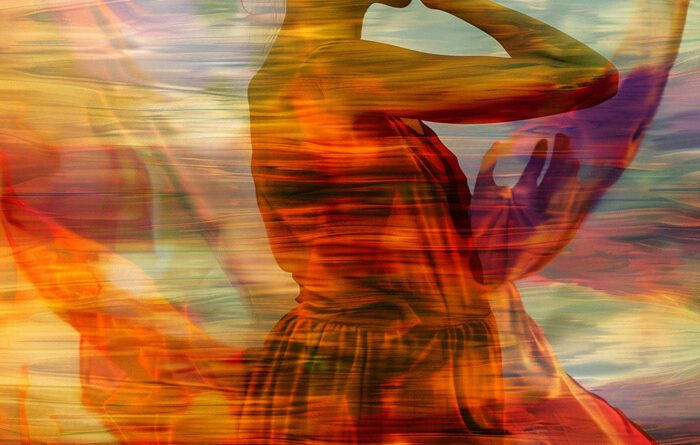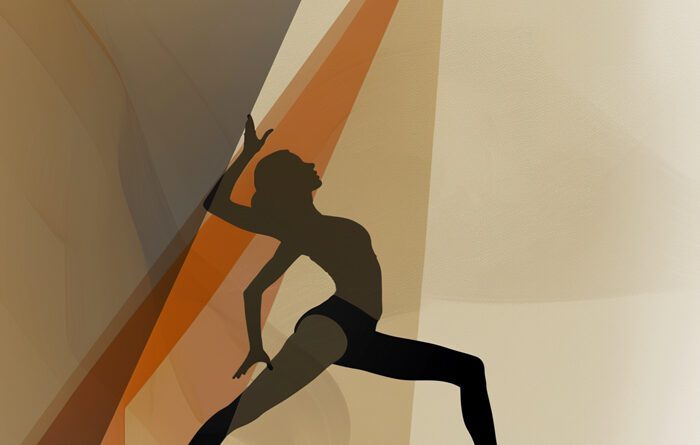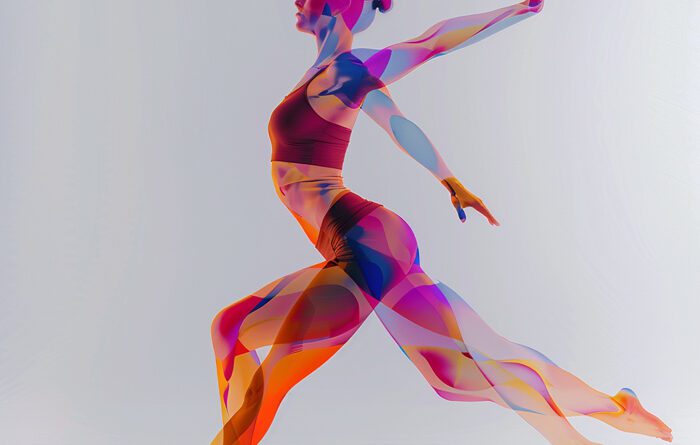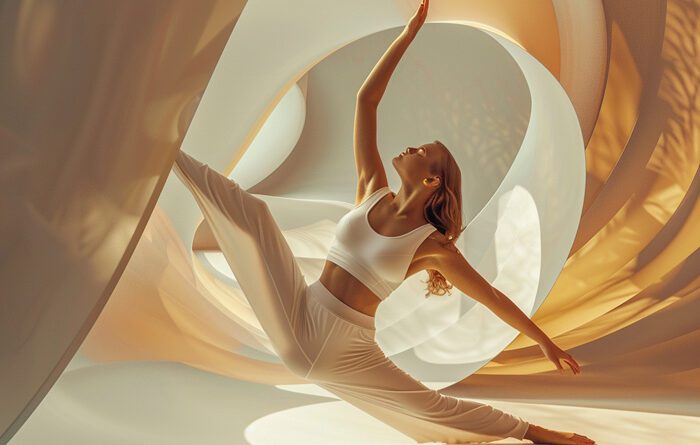Are you new to yoga and interested in learning more about the Seated Forward Bend pose, also known as Paschimottanasana? As a yoga instructor specializing in working with beginners, I understand the importance of providing clear and concise information. In this article, I will guide you through the basics of the Seated Forward Bend, explaining its benefits and how to properly execute the pose. Whether you are looking to increase flexibility, relieve stress, or improve digestion, this gentle and accessible pose is a great addition to your yoga practice. So, let’s explore the Seated Forward Bend together and discover the wonders it can bring to your body and mind.
Overview of Seated Forward Bend
What is Seated Forward Bend?
Seated Forward Bend, also known as Paschimottanasana, is a seated yoga pose that involves folding forward from the hips. The name “Paschimottanasana” comes from the Sanskrit words “Paschima,” meaning west or back of the body, and “Uttana,” meaning intense stretch or extended. This pose primarily targets the hamstrings, lower back, and shoulders, providing a deep stretch to these areas.
Benefits of Seated Forward Bend
Seated Forward Bend offers a wide range of physical, mental, and spiritual benefits. Some of the key benefits include:
- Stretching the hamstrings, calves, and lower back muscles.
- Relieving tension and improving flexibility in the hips.
- Stimulating digestion and aiding in gastrointestinal functions.
- Calming the mind, reducing stress, and relieving anxiety.
- Enhancing emotional well-being and promoting a sense of relaxation.
- Activating and balancing the energy centers (Chakras) within the body.
- Cultivating a connection to the higher self and the spiritual aspects of yoga.
Precautions and Contraindications
While Seated Forward Bend offers numerous benefits, it is important to approach the pose with caution and take certain precautions. Individuals with the following conditions should avoid or modify the pose:
- Back injuries or issues, such as herniated discs or sciatica.
- Hamstring injuries or excessive tightness.
- Recent abdominal surgery or hernias.
- Pregnancy, especially during the second and third trimesters.
- High blood pressure or any other medical condition that restricts blood flow.
It is always recommended to consult with a qualified yoga instructor or healthcare professional before attempting Seated Forward Bend if you have any concerns or medical conditions.
Physical Alignment and Technique
Starting Position
To begin Seated Forward Bend, start by sitting on the mat with your legs extended in front of you. Sit up tall, lengthening your spine, and engage your core muscles. Keep your legs straight, toes pointing toward the ceiling, and flex your feet to activate your leg muscles. Place your hands alongside your hips, fingertips pressing into the mat.
Basic Technique
From the starting position, inhale deeply, elongating your spine, and lifting your arms overhead. Exhale slowly as you hinge forward from the hips, leading with your chest. Reach your hands toward your feet or ankles, keeping your back flat and your gaze forward. Allow your head and neck to relax, avoiding any strain or tension.
Remember to focus on maintaining a steady breath throughout the pose. Hold this position for several breaths, allowing your body to gradually deepen into the stretch. Once you feel the stretch in your hamstrings and lower back, you can gently release and come back to an upright seated position.
Modifications and Variations
For those with limited flexibility or tightness in the hamstrings, it is important to modify the pose to ensure a safe and effective practice. Here are a few modifications and variations of Seated Forward Bend:
- Use a prop: Place a bolster or folded blanket under your hips to elevate your pelvis. This can reduce the intensity of the stretch and provide support to the lower back.
- Bend the knees: If your hamstrings are tight, you can bend your knees slightly to alleviate any strain. Gradually work on straightening the legs as your flexibility improves over time.
- Use a strap: If you are unable to reach your feet or ankles, you can loop a strap around the soles of your feet and hold onto it with your hands. This allows you to extend your reach and deepen the stretch.
Remember to listen to your body and never force yourself into a position that causes pain or discomfort. Seated Forward Bend is a pose that can be adapted and customized according to your individual needs and abilities.
Muscles and Body Parts Engaged
Muscles Stretched
Seated Forward Bend primarily targets the following muscles:
- Hamstrings: The primary muscles at the back of your thighs, responsible for bending the knees and extending the hip joint.
- Calves: The muscles located at the back of your lower legs, responsible for ankle flexion and knee stabilization.
- Lower back: The muscles around the lumbar spine, including the erector spinae, that help maintain spinal stability.
- Shoulders: The muscles surrounding the shoulder joint, including the deltoids, rotator cuff muscles, and trapezius.
By stretching these muscles, Seated Forward Bend helps improve flexibility, release tension, and increase blood flow to these areas, promoting overall muscle health.
Muscles Strengthened
While Seated Forward Bend is primarily a stretching pose, it also engages some muscles to stabilize and support the body. These muscles include:
- Core muscles: The deep abdominal muscles, including the transverse abdominis and obliques, help maintain stability and protect the lower back.
- Quadriceps: The muscles at the front of your thighs, responsible for extending the knee joint.
- Glutes: The muscles in the buttocks region, including the gluteus maximus and gluteus medius, help stabilize the hips and pelvis.
By engaging and strengthening these muscles, Seated Forward Bend improves overall posture and stability, preventing injuries and promoting balanced muscle development.
Benefits for Specific Body Parts
In addition to stretching and strengthening specific muscles, Seated Forward Bend offers benefits to various body parts, including:
- Spine: The pose helps lengthen and decompress the spine, promoting improved posture and spinal alignment.
- Digestive system: By compressing the abdomen, Seated Forward Bend stimulates digestion and can help alleviate constipation and bloating.
- Hips: The pose provides a deep stretch to the hip flexors and can help relieve tightness or discomfort in this area.
- Nervous system: Seated Forward Bend promotes relaxation and can help calm the nervous system, reducing stress and anxiety.
By incorporating Seated Forward Bend into your regular yoga practice, you can experience the holistic benefits it offers to your entire body.

Breath Awareness
Incorporating Breath with Movement
Breath awareness is an integral part of yoga practice, including Seated Forward Bend. As you move into the pose, focus on synchronizing your breath with the movement. Inhale deeply as you lengthen your spine and lift your arms overhead. Exhale slowly as you fold forward into the pose, maintaining a steady and controlled breath throughout.
Tips for Deepening Your Breath
To deepen your breath and enhance the benefits of Seated Forward Bend, you can incorporate the following tips:
- Diaphragmatic breathing: Engage your diaphragm by breathing deeply into your belly, expanding it on inhales and gently contracting it on exhales. This encourages full oxygenation and relaxation.
- Lengthen the exhale: Pay attention to lengthening your exhale, allowing it to be longer than your inhale. This stimulates the relaxation response and promotes a sense of calm.
- Ujjayi Pranayama: Utilize Ujjayi breath, a technique that involves slightly constricting the back of your throat and creating a soft hissing or ocean-like sound on both inhales and exhales. This deepens your breath and helps maintain focus and stability during the pose.
By incorporating these breath awareness techniques, you can enhance the physical and mental benefits of Seated Forward Bend and deepen your overall yoga practice.
Pranayama Techniques
Pranayama, or yogic breathing techniques, can be incorporated into Seated Forward Bend to further enhance the practice. Some pranayama techniques suitable for this pose include:
- Seated Forward Bend with Dirga Pranayama: Practice Seated Forward Bend while engaging in Dirga Pranayama, also known as Three-Part Breath. Inhale deeply into your belly, then expand the ribcage, and finally, lift the collarbones. Exhale slowly, reversing the process. This technique brings a sense of calmness and relaxation.
- Seated Forward Bend with Nadi Shodhana Pranayama: Alternate nostril breathing, also known as Nadi Shodhana Pranayama, can be practiced while holding Seated Forward Bend. This technique involves using your right thumb to close your right nostril, inhaling through the left nostril, and then using your right ring finger or pinky to close your left nostril as you exhale through the right nostril. Continue alternating the breath between nostrils, maintaining a steady and controlled rhythm.
These pranayama techniques offer a deeper level of breath awareness and can amplify the calming and energizing effects of Seated Forward Bend.
Mental and Emotional Benefits
Calming the Mind
Seated Forward Bend, with its gentle forward fold and emphasis on breath awareness, has a calming effect on the mind. As you fold forward, you create a sense of introspection and turn your attention inward. This quietens the mental chatter and helps promote mental clarity and focus.
Relieving Stress and Anxiety
The physical and mental relaxation achieved through Seated Forward Bend can help alleviate stress and anxiety. The pose encourages deep breathing and activates the parasympathetic nervous system, which is responsible for the body’s rest and digest response. This triggers a relaxation response, reducing stress hormones and promoting a sense of calm.
Enhancing Emotional Well-being
Seated Forward Bend has a soothing effect on the nervous system and can help release emotional tension stored in the body. The pose allows for introspection and the opportunity to connect with your emotions on a deeper level. By releasing tension and stress from the body, Seated Forward Bend can enhance emotional well-being and promote a balanced state of mind.
Energetic and Spiritual Aspects
Activation of Energy Centers (Chakras)
Seated Forward Bend activates and stimulates the energy centers, or Chakras, within the body. The pose primarily targets the Muladhara (Root) and Svadhisthana (Sacral) Chakras, located at the base of the spine and the pelvic region, respectively. By directing breath and awareness to these energy centers, Seated Forward Bend helps balance and harmonize the physical, emotional, and spiritual aspects of our being.
Balancing the Energy Flow
Seated Forward Bend encourages the flow of vital energy, known as Prana, throughout the body. By folding forward, you allow the energy to move downward, grounding and stabilizing your being. This balanced energy flow promotes a sense of vitality, inner harmony, and connectedness.
Connection to Higher Self
Seated Forward Bend offers an opportunity to connect with your higher self and explore your spiritual nature. As you fold forward, you create a space of stillness and introspection, offering a gateway to deeper self-awareness and inner wisdom. The pose invites you to surrender and let go, trusting in the inherent wisdom and guidance that resides within.
Modifications for Beginners
Using Props
Beginners may find it helpful to use props to support their practice of Seated Forward Bend. Some prop options include:
- Yoga block: Place a block or two under your hands to elevate the floor, making the pose more accessible and reducing strain on the hamstrings and lower back.
- Blanket/towel: Roll up a blanket or towel and place it under your knees to provide added support and cushioning.
- Bolster: Sit on a bolster or folded blanket to elevate your hips, allowing for a more comfortable forward fold.
Using props can help beginners gradually build flexibility and confidence in the pose, ensuring a safe and enjoyable practice.
Reducing Forward Bend Intensity
Beginners may need to reduce the intensity of the forward bend in Seated Forward Bend. Here are some modifications to consider:
- Bend the knees: Keep a slight bend in the knees rather than fully straightening the legs. This reduces strain on the hamstrings and allows for a gentler stretch.
- Use a strap: Loop a strap or belt around the soles of your feet and hold onto the ends to assist in the forward fold. This provides support and helps you maintain alignment as you work on increasing flexibility.
Remember that progress in yoga is a personal journey, and it is important to honor your body’s limitations while gradually working towards deeper variations of the pose.
Focusing on Alignment
For beginners, focusing on alignment is crucial in Seated Forward Bend. The following alignment tips can enhance the effectiveness and safety of the pose:
- Lengthen the spine: Prioritize maintaining length in the spine throughout the pose. Avoid rounding the back by engaging the core and drawing the shoulder blades down and back.
- Hinge from the hips: Initiate the forward fold from your hip joints rather than rounding through the spine. Imagine leading with your chest as you fold forward.
- Soften the knees: If you feel excessive tension in the hamstrings, allow your knees to soften slightly. This helps prevent strain and promotes an optimal stretch.
By focusing on proper alignment, beginners can ensure a mindful, safe, and effective practice of Seated Forward Bend.
Contrasting Seated Forward Bend with Other Forward Bends
Distinctions from Standing Forward Bend
While Seated Forward Bend and Standing Forward Bend (Uttanasana) share a forward folding motion, there are distinct differences between the two poses. Standing Forward Bend is performed in a standing position, with the torso folding forward from the hips while the legs are grounded. Seated Forward Bend, on the other hand, is performed in a seated position, with the legs extended forward and the fold initiated from a seated position.
Seated Forward Bend offers a deeper stretch to the hamstrings and lower back due to the seated position, while Standing Forward Bend allows for greater engagement of the leg and core muscles due to the involvement of balance and stability.
Comparisons with Bound Angle Pose
Bound Angle Pose (Baddha Konasana) involves sitting on the mat with the soles of your feet touching, creating a diamond shape with the legs. While Bound Angle Pose also involves a forward fold, the focus is on opening the hips and groin, rather than stretching the hamstrings and lower back.
Seated Forward Bend and Bound Angle Pose complement each other and can be incorporated together in a well-rounded yoga practice. Seated Forward Bend helps prepare the body for Bound Angle Pose by stretching the hamstrings and lower back, creating optimal alignment and ease in the ensuing pose.
Differences from Child’s Pose
Although both Seated Forward Bend and Child’s Pose (Balasana) involve a forward fold, they differ in terms of body position and level of intensity. Child’s Pose is a kneeling pose that involves sitting back on the heels, spreading the knees apart, and folding forward with the arms extended. This pose is often used as a resting or grounding posture in yoga practice.
Seated Forward Bend, on the other hand, is performed in a seated position with the legs extended forward, targeting specific areas such as the hamstrings and lower back. Child’s Pose primarily focuses on releasing tension in the back and shoulders, while Seated Forward Bend provides a deeper stretch to the lower body.
Integrating Seated Forward Bend in a Yoga Sequence
Preparation Poses
To prepare the body for Seated Forward Bend, consider incorporating the following poses into your yoga sequence:
- Cat-Cow Pose: Warm up the spine and increase mobility by moving through Cat-Cow Pose, alternating between spinal flexion and extension.
- Bridge Pose: Activate and open the chest and hips with Bridge Pose. This pose helps counteract the effects of sitting and prepares the body for the forward fold.
- Half Uttanasana (Standing Half Forward Bend): Practice a standing forward fold to stretch the hamstrings and prepare the body for the seated version.
By incorporating these preparatory poses, you can ensure that your body is adequately warmed up and ready for the deeper stretch of Seated Forward Bend.
Sequencing Tips
When sequencing Seated Forward Bend within a yoga practice, consider the following tips:
- Warm-up: Begin your practice with a gentle warm-up sequence that includes dynamic movements and stretches to awaken the body and increase circulation.
- Balancing poses: Incorporate balancing poses before Seated Forward Bend to promote stability and focus. This can include Tree Pose (Vrksasana) or Warrior III (Virabhadrasana III).
- Standing poses: Include standing poses that engage the legs and hips, such as Warrior II (Virabhadrasana II) or Triangle Pose (Trikonasana), to adequately prepare the body for the seated forward fold.
- Seated Forward Bend: Place Seated Forward Bend towards the middle or end of your practice, once the body is warm and more open. This allows for a deeper stretch and greater relaxation.
By sequencing Seated Forward Bend strategically within your yoga practice, you can optimize the benefits and ensure a well-rounded session.
Common Complementary Poses
To complement the benefits of Seated Forward Bend, consider incorporating the following poses into your practice:
- Downward Facing Dog (Adho Mukha Svanasana): This pose stretches the entire back body, including the hamstrings and calves, while also providing a rejuvenating stretch for the shoulders.
- Child’s Pose (Balasana): Balasana offers a gentle stretch to the back, hips, and shoulders while promoting a sense of relaxation and surrender.
- Standing Forward Bend (Uttanasana): Uttanasana is another forward fold that can be used to deepen the stretch in the hamstrings, calves, and lower back while promoting relaxation and grounding.
By incorporating these complementary poses, you can create a well-rounded practice that supports and enhances the benefits of Seated Forward Bend.
Conclusion
Seated Forward Bend, or Paschimottanasana, is a powerful yoga pose that offers a multitude of benefits for the body, mind, and spirit. From stretching and strengthening various muscles to promoting mental clarity and emotional well-being, this pose has the potential to transform your yoga practice. Whether you are a beginner or an experienced practitioner, Seated Forward Bend can be adapted to suit your individual needs and abilities, allowing you to experience its unique benefits. So, take a seat, fold forward, and embark on a journey of self-exploration and growth with Seated Forward Bend.







